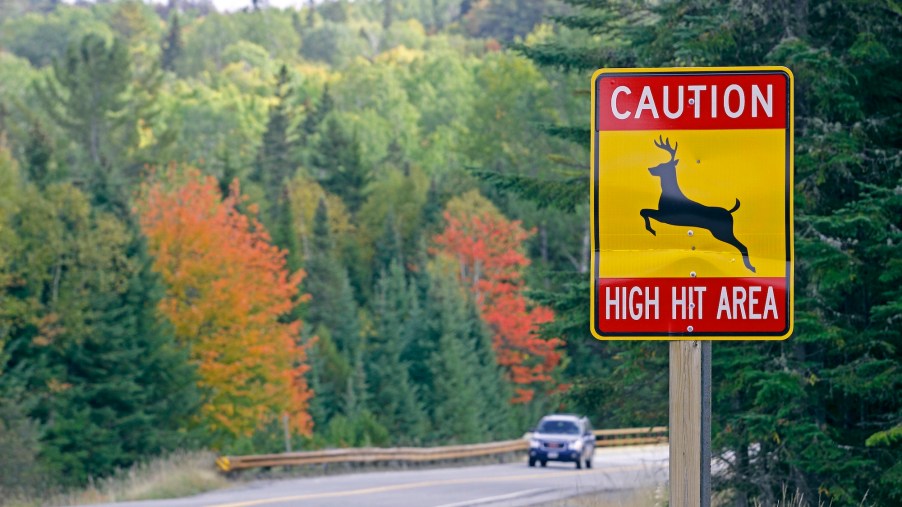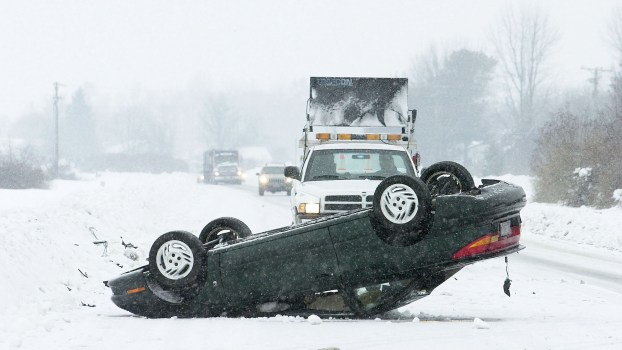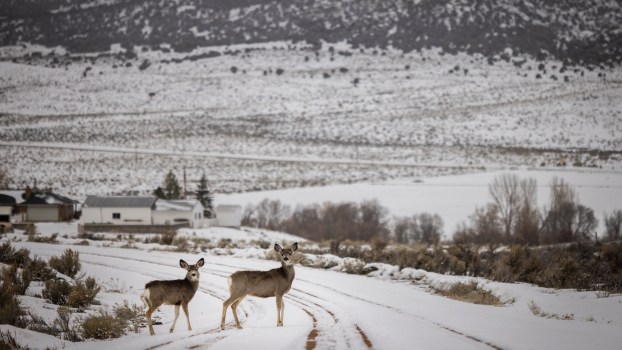
Do Deer Whistles on Cars Really Work?
Just because deer are cute and cuddly doesn’t mean that hitting one can’t wreck your car and seriously injure you and your passengers. Though you should always drive with caution in rural areas, deer’s unpredictable nature is still a big risk factor.
Some drivers add deer whistles to their vehicles to try to keep these adorable woodland creatures out of harm’s way. But how do these car accessories work, and can they really prevent deer-related accidents?
Updated: 9/30
Why some swear by deer whistles
The Insurance Information Institute (III) says, “For the year July 1, 2019, to June 30, 202, there were estimated to be 1.5 million deer claims industry-wide, according to State Farm.” So it makes sense we’d try to mitigate these incidents. That’s where deer whistles come in. They’re typically packaged in pairs, one for a buck and another for a doe. A buck whistle emits a hissing noise, while the doe whistle sounds more like a regular whistle. They have adhesive bases, so you can easily attach them to your car’s grille.
The whistles start to make noise once you’re driving between 30 and 35 mph. Some cars, such as EVs, are so silent that deer often bound into traffic before hearing the oncoming vehicle. The whistle supposedly gives the deer advance notice, making it stop and assess its surroundings.
Experts weigh in
Though deer whistles are a good idea in theory, they pose a few problems. Some fail to make any sounds, or other exterior noises may mute the whistles’ sound. If humans can’t hear the whistle under wind and tire noise, a deer probably can’t either, especially from a distance.
Another flaw is that whistle manufacturers assume a deer will immediately stop after hearing the sound. Some deer will bolt at the sound to flee oncoming danger. September through December is mating season for deer, so they might also be especially flighty during this time.
These facts were proven in a study by Peter Scheifele, an animal audiology expert, published on ResearchGate. A research team tested six deer whistles, all of which could barely be heard by deer. Scheifele says a deer would probably hear the whistle only if it were within striking distance of a car. And an Iowa State University study shows that blowing the whistles beside penned deer elicited no response from the animals.
New lawsuit calls deer whistles a ‘sham”
Though some drivers say deer whistles work, others believe these devices are nothing but marketing schemes. Only weeks ago, a class-action lawsuit was filed against Hopkins Manufacturing, producer of the popular Bell Deer Warning. The plaintiff says the company is misleading customers with the product’s guarantee of preventing accidents.
The lawsuit, published in ClassAction.org, cites several studies detailing deer whistles’ ineffectiveness, including reports from the Insurance Institute for Highway Safety. The plaintiff also states Hopkins Manufacturing is “well-aware” of its deceit because of national news coverage on the subject.
Would you put a deer whistle on your car?
The case in support of deer whistles is largely anecdotal and lacks concrete evidence. However, because the product costs only around $10, many drivers see it as an inexpensive safety precaution. Despite this, the Insurance Information Institute still warns drivers not to rely on these whistles because they are “not proven effective.”
To alert a deer that your car is heading its way, blasting your horn is much more effective. As soon as you spot a deer, slow down and flash your high-beams so it can’t miss you. If you can’t avoid a collision, the III cautions drivers to brake hard instead of swerving.





